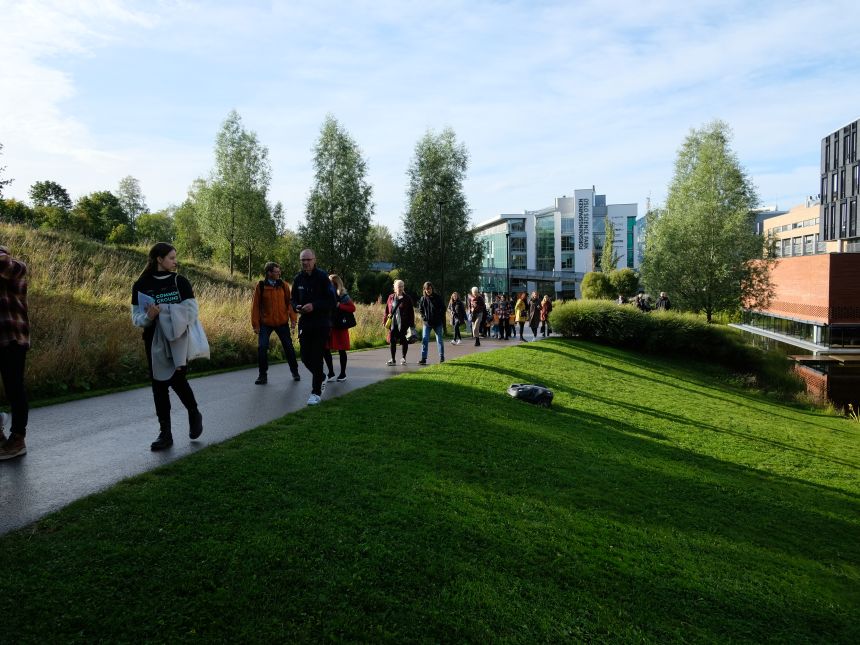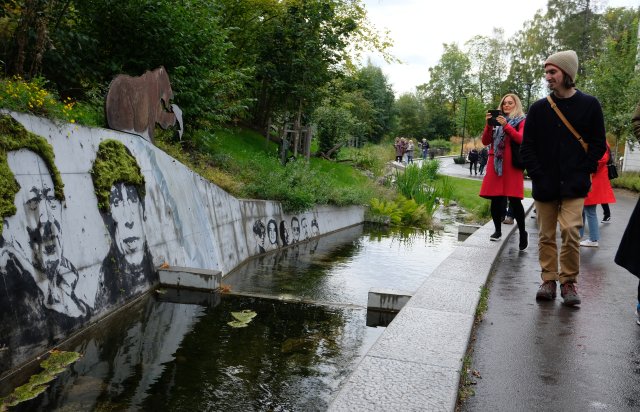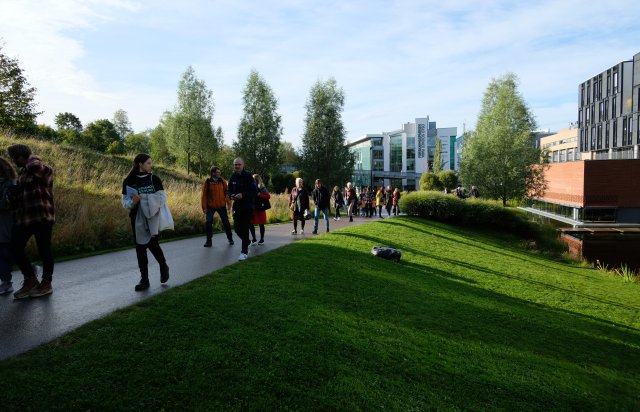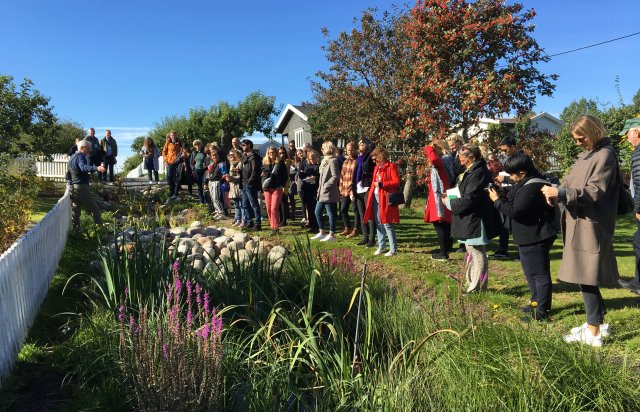
A bluegreen walk through Oslo Science City
On Friday the 20th of September, over 40 participants from the International Federation of Landscape Architects (IFLA) world congress visited Gaustadbekkendalen and Oslo Science City for a walk and talk. The fully booked tour was one of several options the conference attendees could choose from in the Oslo area, and was led by NIVA.
The walk, guided by Bent Braskerud from Oslo Municipality Water and Sewage Administration, began at Gaustadbekken’s outlet near Blindern metro station and ended at Ullevål. Gaustadbekken flows through Oslo Science City; a district for innovation established in cooperation between Oslo Municipality, the University of Oslo, Oslo Science Park, and other partners. The project was founded to stimulate interaction between different fields, industries, and the public sector.

After spending many years in underground pipes, Gaustadbekken was newly re-opened as a part of Oslo Municipality’s strategy for storm water and flood management. In addition to the de-culverting being central for water and sewage management, the opening of the stream and the landscape architecture surrounding it are central for the revival of urban water systems and the development of green-blue corridors in Oslo. As of yet, a mix of rain water and potable water is circulated in the stream during the summer months, but upon the opening of the university’s life science building in 2024, actual stream water will be coursing through the whole water system.

Along the way through Oslo Science City, the participants visited several of the architectural and artistic solutions along Gaustadbekken, gaining insight into the organization of new and finished projects side by side in an area shared by multiple landowners. Several local landscape architects and project leaders who had participated in the design of the area held talks along the way, elucidating how the architecture of the waterway interacts with local flora and fauna, and how it supports its function as a water management strategy.
Among the speakers were research manager Therese Fosholt Moe and research scientist Frode Sundnes from NIVA. Finally, the participants were guided through the Sogn Garden Allotments where several innovative blue-green solutions relating to water management and Gaustadbekken have been established by the allotments, Oslo Municipality, the Norwegian University of Life Sciences (NMBU), and NIVA as part of the Sogn Hagelab initiative. The group enjoyed locally grown delights from the gardens while learning about allotment life and the projects, and could contribute their own perspectives on the tour.

NIVA-scientist Line Johanne Barkved was responsible for the event.
- Gaustadbekken is an area with a lot of activity in a relatively concentrated space, and the tour gave a nice frame for participants to explore the past, present, and future of the area. A goal we had when putting together the program for the tour was to highlight the area from different academic perspectives, and I believe this was successfully achieved. In a short period of time we experienced Gaustadbekken together, exchanging experience and forming bonds along the way, Barkved says.
